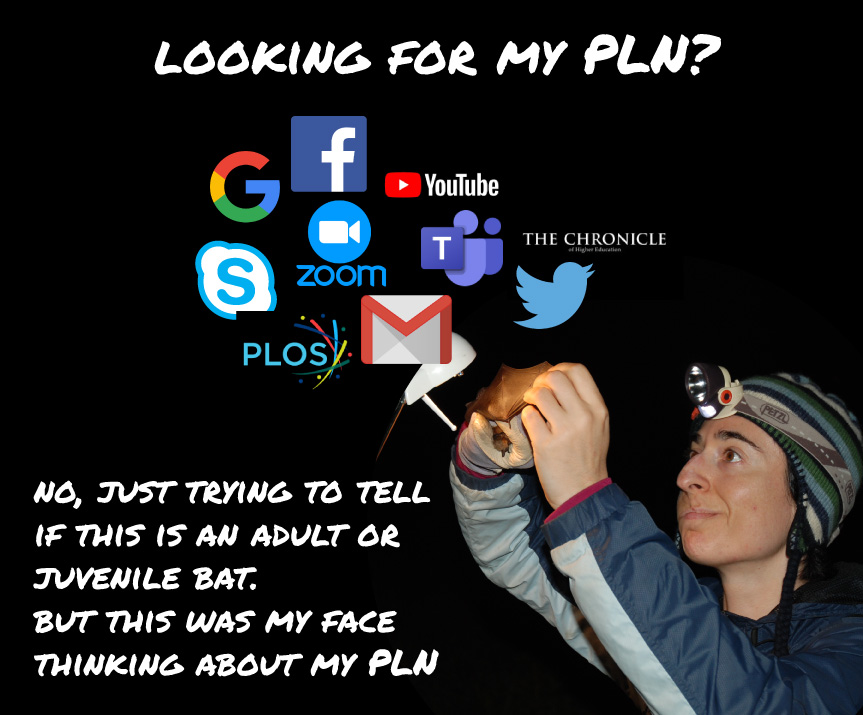This third ONL202 topic alienated me a bit at first. As I watched Kay Oddone’s YouTube videos (1 and 2) on the theory and practice of personal learning networks (PLNs) and read the studies by Capdeferro & Romero and Brindley et al, I felt kind of ‘meh’.
Quite a contrast from how content for the first two topics immediately sparked thoughts about my practice as a digital learner and educator and how my students learn in the environment I create. My main takeaways from Oddone’s videos were that this is about informal use of social networking sites to exchange info and build your teaching practice. Oddone (whose website gives me a bad case of WordPress envy) contrasts PLNs with personal learning communities (PLCs) like other authors, such as Guttierez, and presents a mind map of her PLN, like those returned by a Google image search.
And while I seized on the chance to remix David White’s diagram of digital literacies in topic, I have no interest in creating a mind map or delving into my PLN. Maybe it’s because I don’t really have one, or at least not a ‘real’ one, as defined by Oddone.
I mean, my online pedagogical learning (not counting ONL202) is limited to the occasional paper (to be honest, I’m more into the lit related to my discipline), Ted talk or blog post by an accomplished educator or on legit HE sites, such as the Chronicle of Higher Education. And I mainly access these resources to learn about a specific approach or when facing a new challenge. I barely share my practice online, with the exception of my course websites.
Instead, I’ve built my practice on the foundation of my University Teaching Certificate – an incredible, collaborative learning experience (thanks, Taylor Institute!) and the inspiring example of my PhD supervisor, Robert Barclay, an award-winning educator. Since joining academia, I’ve taken several CDTL and CIT workshops and have participated in teaching workshops by my department. Finally, my colleagues (NUS and external) and I share information on pedagogy during informal conversations and learn from each other that way.
No doubt like most educators, I’ve applied combinations of methods to new challenges. Like, when I joined NUS as a nearly fresh grad, and my first task was to create and develop a new, overseas field course, I consulted online sources and talked with Profs Chris McMorran and David Taylor, whose experience taking NUS students overseas was very helpful. And when I finally led my field course, I began learning in the field from my students and my Filipino partners, including HE educators.
Turns out my practice aligns well with a broader definition of PLNs, by Future Learn. I find a better fit with its direct endorsement of our offline activities and how they mesh with our online ones, and the study by Rajagopal et. al further confirms the value of field experience.
So, maybe, if I look hard enough (see image) I see I do have my own PLN.


Hi Joanna,
I appreciate that you make visible informal and formal learning networks, which indeed are equally important for individual and collective development.
Best regards,
Maria, group 11
Hi Maria,
Thank you very much for taking the time to visit & comment on my blog post.
Joanna